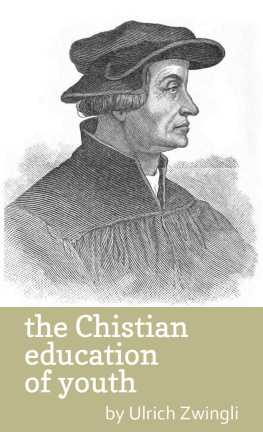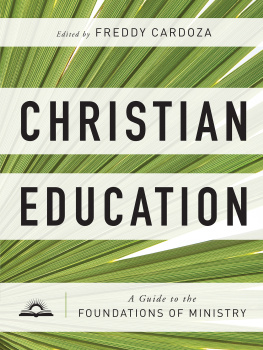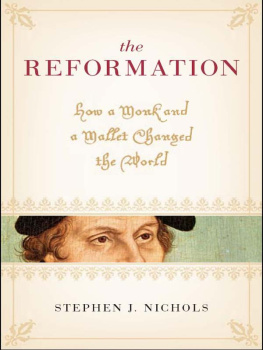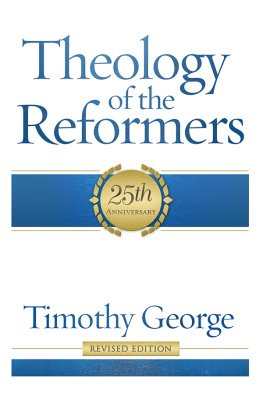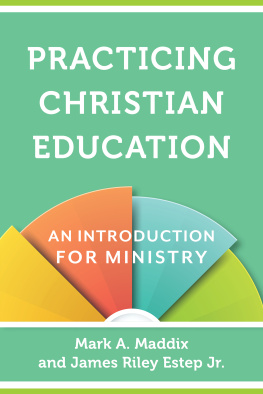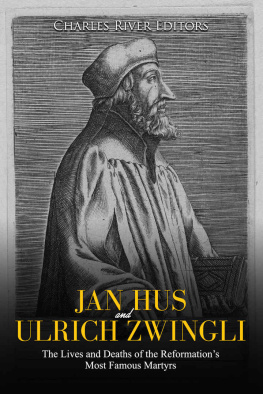The Christian Education of Youth
By
Ulrich Zwingli
Dedicated to the friendsof Christian Education
Preface
Ulrich Zwingli is well known as a reformer andtheologian of the sixteenth century, but he is not so well known as aneducator. Readers who have access to Zwingli's complete works and have time tocollect from them what belongs to his educational career, will feel rewardedfor the time spent in such work; but most persons interested in Zwingli have notime for research of this kind, and all such will be glad to read this littlebook.
As a matter of fact, the educational side ofsome religious leaders has not been presented in the history of education,fully enough to do them justice. The religious activity of these men involvesan educational activity which, in many cases, is truly remarkable.
Several years ago, we read a reprint ofZwingli's educational treatise in the original dialect of Zurich. The peculiarcharm of this dialect and the interest in the subject treated by Zwingliinduced us to translate the treatise for our own satisfaction. Having beenrepeatedly advised to have this translation published, we finally proceeded torevise it for publication, and to write, also, as an introduction to it, asketch of Zwingli's life from an educational point of view.
Zwingli first wrote his treatise in Latin and itwas printed at Basel, in 1523, under the title, "Quo pacto ingenuiadolescentes informandi sint, Praeceptiones pauculae, Huldricho Zuinglio autore."The Christian spirit of the treatise does not appear in this title, whichmeans, "In what manner noble youth ought to be instructed; a fewprecepts. Ulrich Zwingli, the author. What the language of heathen Romeomitted in the title, Zwingli inserted, in preparing an edition, in the dialectof Zurich, for his Christian countrymen. It was printed in 1526, by ChristoffelFroschauer, at Zurich, under the title, "Wje man die Jugendt in guotensitten und, Christenlicher zucht uferziehen unnd leeren soelle, ettliche kurtzeunderwysung, durch Huldrychen Zuinglin beschriben." In English, thistitle reads thus: "How one ought to bring up aud instruct youth in goodmanners and Christian discipline; a few short precepts, written by UlrichZwingli. That he prepared this text himself for the printer, is theopinion of Director Israel, Zschopau, Saxony, and of Professor Staehelin,Basel, Switzerland. The latter is the latest standard authority on Zwingli'sworks, and the former selected this text, as the one from which to publish areprint, for his collection of rare pedagogical works of the 16th and 17thcenturies, rather than to follow the Latin edition of 1523 or the South Germanedition of 1524.
It is Director Isreal's reprint that we havetranslated into English, with little reference to any of the modern Germantexts on the life and works of Zwingli, in order to catch more fully, ifpossible, the spirit of Zwingli from the treatise, even if, occasionally, goodEnglish could have been much more easily written from the excellent modernGerman works.
We are greatly indebted to Director Israel forthe following:
"The permission which you desire topublish, in English, my pamphlet on Zwingli's Christian Education of Youth ishereby cheerfully granted and I wish you success in your undertaking,
With great respect,
A. Israel."
We are also indebted to our countryman, the Rev.E. A. Hofer of Philadelphia, for hints on the dialect of Zurich.
For subject-matter on Zwingli's educationalcareer, acknowledgment is hereby made to Christoffel's life of Zwingli, VanHome's The Mountain Boy of Wildhaus, Blackburn's The Patriotic Reformer,Moerikofer's Zwingli, Cochran's Zwingli, and Staehelin's Life and Works ofZwingli, in two volumes.
In closing we may remark that Zwingli's treatiseon the Christian Education of Youth was translated into English with title anddate as follows: "Certeyne Preceptes gathered by Hulricus Zwingliusdeclaring howe the ingenious Youth ought to be instructed and brought untoChrist. Ippeswich, 1548." The present translation from the original,together with a sketch of the educational life of Zwingli, it is hoped, willadd new interest to the study of Christian education in the Reformation period.
Alcide Reichenbach.
January, 1899.
German Editors Preface
"Desshalb solman den juengling zuo den brunnen wysen." Zwingli.
The following short treatise was dedicated byZwingli, in 1523 to Gerald Meyer, his step-son, who had just returned from thebath and who fell with Zwingli in the battle at Cappel, October 11, 1531.Zwingli did this in accordance with a custom then existing among persons whosefriends were at the baths or had returned, as was the case with Gerald Meyer.The manuscript was in Latin and was published during the same year, atBasel, by Jacob Ceporin, who was one of Zwingli's friends. In 1524 it appearedin Augsburg in connection with Melanchthon's Elementa Puerilia; and inthe same year it was also published at Zurich, by C. Froschauer, the publisherof Zwingli's works. The treatise is also found in a collection of 21 papers on pedagogicalsubjects, making 676 pages, published at Basel, in 1541; but Zwingli's name iswithheld, the author being designated by the phrase, "Written by aChristian theologian." In the latest edition of Zwingli's works, thistreatise is found in volume IV., page 148.
Already in the year 1524, a translation intoGerman appeared, no mention being made of the place of publication. Thetitle-page contains an illustration symbolizing the occasion for writing thelittle treatise; a youth receives from the hand of a learned man a book inreturn for a cock, the symbol of convalescence. Water-jugs placed beside atable symbolize the bath. Jacob Leporin is named as publisher. This edition,republished, in 1844, by K. Fulda, is erroneously represented by him as thefirst and only one hitherto published.
A new translation into German, publishedin 1526, by C. Froschauer, at Zurich, differs materially from that of 1524. Inhis preface to the second edition, published in 1846, editor Christoffel says,"the text appears in literary German, in the spirit and language ofZwingli (i. e., in Zwingli's dialect), whereas the translation of 1524 iswritten in the dialect of the Upper-Rhine, which is entirely different from thedialect of Zwingli." The translation made at Zurich, in 1526, is, bycomparison, more easily understood, more impressive, more popular, and in manypassages more exact than the translation of 1524.
The translation of 1526 is neither concise norclosely literal (since Zwingli is believed to have made it himself), but itrenders the sense of the Latin clearly and unequivocally. It freely adds thenecessary words or clauses, where the brevity of the Latin interferes with thespirit of the German. Where the Latin text makes learned or unusual allusionsto the subject, his translation omits them or substitutes plain language. Thetranslation of 1524 closely follows the Latin.
It is worthy of note that K. Fulda regardedJacob Leporin as the printer and publisher of the translation of 1524. Masius,however, who comments fully on the contents of the treatise and on Zwingli'spedagogical views, in Schmidt's Encyclopedia X., 771-782, ascribes the editingof the treatise to Ceporin, Zwingli's friend, and proof-reader at the press ofthe celebrated Andrew Crandander, in Basel, whence, through Zwingli'sinfluence, he was called to the gymnasium at Zurich, in 1525, where he died thesame year. The name Leporin would thus seem to be a striking typographicalerror. Gueder, in Herzog's Realencyclopedia, XVIII., 720, says that thetreatise is rich in excellent hints and is of value in regard to Zwingli'sviews of man's destiny. He finds the following to be characteristic of Zwingli:
Next page
